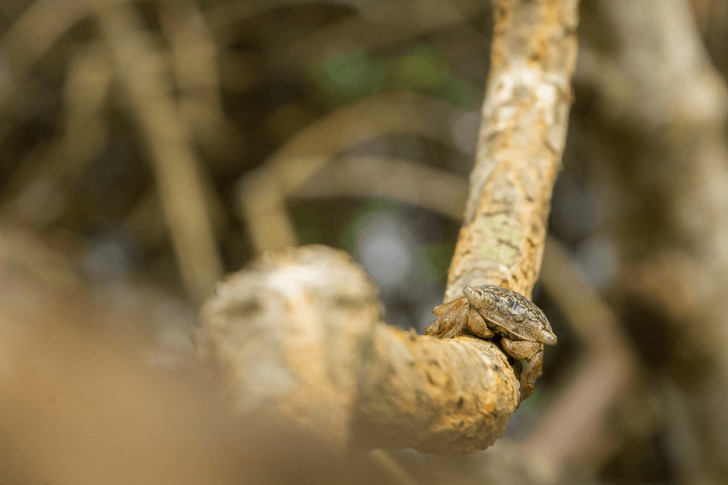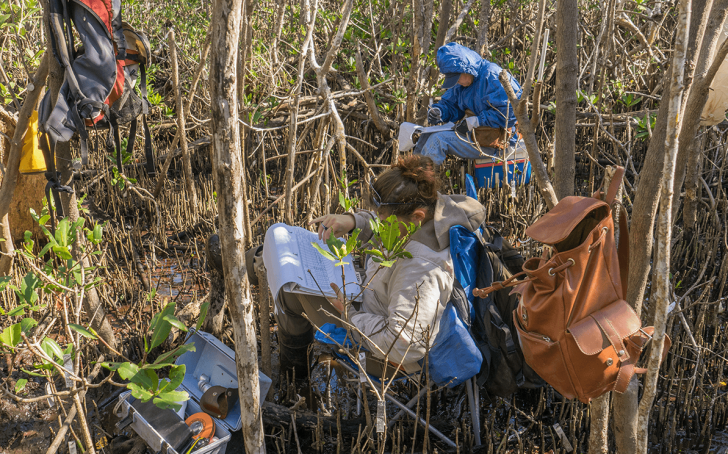by Leif Johnson
If you’ve spent any time around mangroves you know they have a distinct smell. It’s true, and out here my brain never quite knows what to make of that smell. It’s clean, but dirty, all at the same time; like a T-shirt that got the “quick wash” cycle when it needed the “heavily soiled” one. This pungent odor is the smell of hydrogen sulfide, often referred to as the “rotten eggs gas” and can become more intense during the spring and summer months. Hydrogen sulfide is produced in these forests by anaerobic bacteria as they break down organic matter (detritus) in the soil. Mangroves produce massive amounts of detritus — up to one kilogram per square meter every year — which, as it breaks down uses up a lot of the oxygen in the water, hence the anaerobic (without oxygen) bacteria. The breaking down of detritus releases nutrients back to the forests and out to the open ocean on the backs of the tides, making this ecosystem a crucial source of naturally occurring nutrients to the coast.
Unfortunately, though this smell is the product of an incredibly important ecological function, it is often thought of as offensive to humans, which has been a prime factor in shaping how people initially viewed and in some cases still view mangroves today. Couple this odor with an abundance of bugs, mud, navigation hazards, and the fact that they occupy prime coastal real estate and you have what some might call, an enemy of the state, or just a worthless swamp. All of this has inevitably led to mangroves being undervalued and consequently destroyed, “approximately 50% of the world’s mangrove forests have disappeared over the past 50 years.”
“Previous research by Valiela indicated mangroves are being destroyed more than twice as quickly as the well-publicized destruction of tropical rainforests.”
Luckily though, many people didn’t agree with this view of mangroves, and in recent decades, scientists have dared to look deeper into their function and role. Through their research we now know them to be a vitally important piece to life on the coast. “To keep every cog and wheel is the first precaution of intelligent tinkering.” — Aldo Leopold
Not only do these forests provide massive amounts of nutrients to the ocean and stabilize soil with their roots, they also build soil by trapping it, creating new land. They act as crucial nursery habitat for nearly all of our sport and commercial fish in Southwest Florida. They break down wave height by 13–66% over 100 meters and reduce storm surge by 5–50 centimeters over a kilometer, combat erosion, promote biodiversity, sequester more CO2 per hectare than the rainforest, and help improve water quality by filtering and trapping sediments. All of which culminates in “at least US$ 1.6 billion each year in ecosystem services.”
These forests are the ultimate multitaskers and if any of us worked as hard as they did we would have a cloud of bugs following us and smell pretty bad too.


